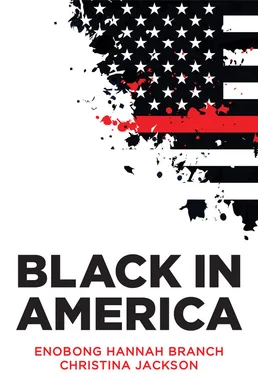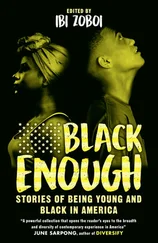Conclusion: American Racism and the Black Community
Nothing handed down from the past could keep race alive if we did not constantly reinvent and re-ritualize it to fit our terrain. If race lives on today, it can do so only because we continue to create and recreate it in our social life, continue to verify it, and thus continue to need a social vocabulary that will allow us to make sense, not of what our ancestors did then, but what we choose to do now. (Fields, 1990:118)
Resurgence of the post-racial ideal results from a failure to grapple with the long history of American racism and how it has integrally shaped the Black community. A majority of Whites acknowledge that Blacks have a “tough life,” but often Whites view this reality as having little or nothing to do with them or Whiteness. The dominant perspective seems to situate racial problems in Black culture and Black communities, rather than recognizing the role of racism, discrimination, capitalism and White unearned advantages in the current state of Black American life.
Sociologists Tyrone A. Forman and Amanda E. Lewis (2015) point to rising racial apathy , and an insensitivity and/or indifference toward racial inequality, among most White college students. Sociologist Margaret A. Haberman (2018), in her book White Kids: Growing Up with Privilege in a Racially Divided America , notes the connection between this apathy and attitudes toward affirmative action. Ideals of deservingness, hard work and earning your way dominate our popular narrative. Meritocracy is the American way. This closely held core belief ignores an inconvenient truth: the extent to which the American educational system was and is rigged against Black Americans. Educational achievement has never been a product exclusively of an individual’s hard work. It reflects the benefits or hardships of parents’ economic and educational achievements, which were impacted by the achievements of their parents. Within two generations, we are approaching a time when Black Americans were structurally marginalized educationally by law, the impact of which reverberates today.
Racism created and maintains the Black problem. By absolving ourselves of responsibility and pointing to cultural deficiencies, we write in red on walls covered in Black blood and claim not to see. In the next chapter, we analyze how the racial frame of Blackness as culturally deficient serves to normalize racial oppression. Stereotypes and controlling images serve to create a monolithic image of Black America, obscuring the intersection of identities further marginalizing some Blacks while privileging others.
Critical Reflection Questions
1 What is the difference between race and racism?
2 Describe conventional and critical approaches to race.
3 Define the term racialized social structure. Using the institution of education as an example, how is racial inequality maintained?
1 1. Franklin and Brooks Higginbotham (2011:100).
2 2. Sociologist Eduardo Bonilla-Silva (1996) introduced the concept of a racialized system to provide a theoretical framework through which racism could be viewed as having a structural interpretation. He asserts that, in a racialized social system, “economic, political, social, and ideological levels are partially structured” along racial lines, where races are socially constructed and typically determined by phenotypic characteristics (Bonilla-Silva 1996:469). The ultimate purpose of this categorization is to provide a basis for the formation of a social hierarchy along racial lines that justifies the unequal distribution of social goods (economic and political) amongst races by reference to their place in the hierarchical structure. The end result of this is that the life chances of racial groups are dissimilar, and the degree of racialization of a social system is indicated by this dissimilarity in life chances (Bonilla-Silva 1996:470).
3 3. https://medium.com/@matthewjohn_36675/White-supremacy-and-capitalism-the-two-headed-dragon-that-must-be-slain-dc55fc5e8ccf.
4 4. https://socialistworker.org/2011/01/04/race-class-and-marxism.
5 5. An example can be drawn by examining the role of the state: Oliver and Shapiro (1995) in their examination of the racialization of state policy demonstrate how state policy has simultaneously impaired the ability of Black Americans to accumulate wealth, while promoting the accumulation of wealth amongst White Americans. Thus, members of the dominant group can profess a belief in racial equality and still reap the material benefits of their dominant position (Bonilla-Silva 1996; Blauner 2001).
6 6. Lieberson (1980:137) states: “Georgia passed laws in 1770, 1829, and 1853 that prohibited their education; Virginia in 1849; and South Carolina in 1740, 1800, and 1834. The latter prohibitions also applied to free Blacks.”
Конец ознакомительного фрагмента.
Текст предоставлен ООО «ЛитРес».
Прочитайте эту книгу целиком, на ЛитРес.
Безопасно оплатить книгу можно банковской картой Visa, MasterCard, Maestro, со счета мобильного телефона, с платежного терминала, в салоне МТС или Связной, через PayPal, WebMoney, Яндекс.Деньги, QIWI Кошелек, бонусными картами или другим удобным Вам способом.












